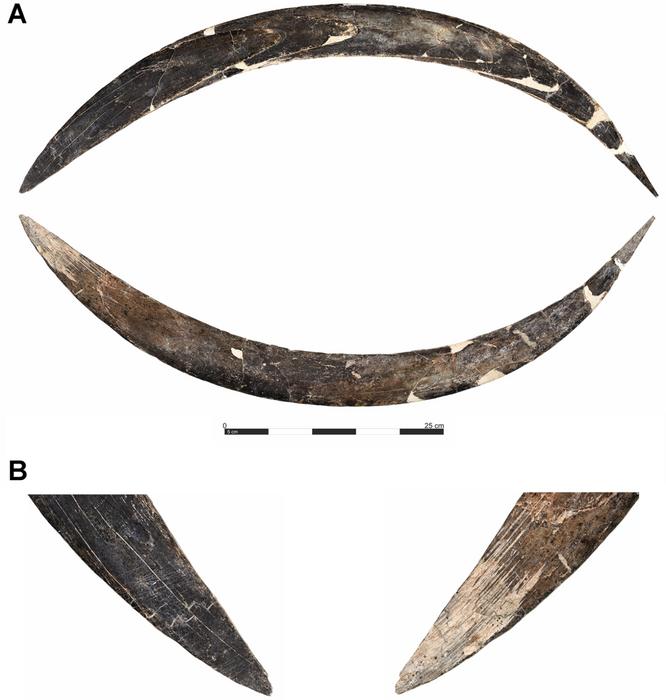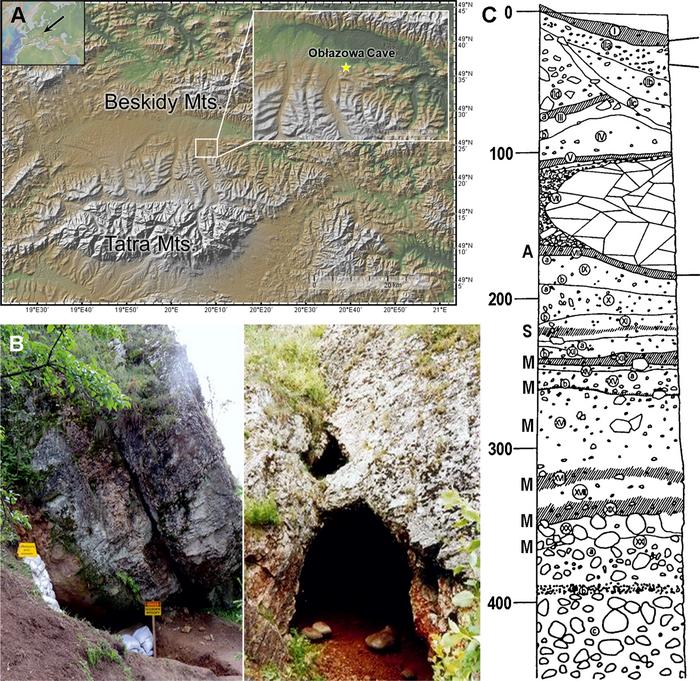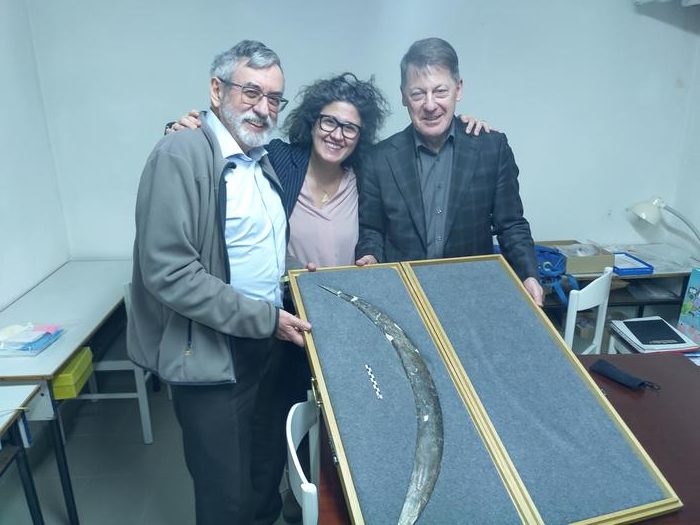“Boomerang” made from mammoth tusk is likely one of the oldest known in Europe at around 40,000 years old, per analysis of this artifact from the Obłazowa Cave, a Polish Upper Paleolithic cave

Abstract from the paper
Beginning with the Early Aurignacian, Homo sapiens demonstrated an enhanced symbolic capacity, expanding artistic expressions from body decoration to portable art and aesthetically refined tools. These artistic endeavors, often intertwined with utilitarian purposes, have sparked debates regarding their symbolic versus functional roles. Among these remarkable artifacts is a complete mammoth tusk boomerang from Layer VIII of Obłazowa Cave, Poland, found in association with a human phalanx. Determining its precise chronology and cultural context is critical for understanding the emergence and variability of symbolic behaviors among early Homo sapiens groups in Europe. This study refines the chronology of the Early Upper Paleolithic occupation of Layer VIII at Obłazowa Cave through radiocarbon dating of several bones and the human fossil found near the ivory boomerang. Bayesian modeling places the site’s main occupation phase between 42,810−38,550 cal BP (95,4% probability). The mammoth-ivory boomerang, calibrated to 42,290−39,280 cal BP with a 95.4% probability, emerges as one of Europe’s oldest known examples of this complex tool, exemplifying technological and symbolic innovation at Obłazowa Cave. This multi-disciplinary research underscores the importance of integrating advanced methodologies to explore cultural practices during the Upper Paleolithic. The findings not only deepen our understanding of Homo sapiens’ adaptive strategies but also highlight the nuanced interplay of technology, symbolism, and environmental interaction during the earliest phases of human dispersals in Central Europe.

Talamo S, Casaccia N, Richards MP, Wacker L, Tassoni L, Nadachowski A, et al., Boomerang and bones: Refining the chronology of the Early Upper Paleolithic at Obłazowa Cave, Poland, PLoS One (2025) 20(6): e0324911, DOI: https://doi.org/10.1371/journal.pone.0324911

Author countries: Italy, Canada, Switzerland, Poland, U.K., Germany.
Funding: This research was supported by the European Research Council under the European Union’s Horizon 2020 Research and Innovation Programme (grant agreement No. 803147 RESOLUTION, awarded to Sahra Talamo). A.P. collaborates in the Italian grant PRIN20209LLK8S_001 DYNASTY: “Neanderthals dynamic pathway and resilience in central Europe through the chronometric sustainability” funded by the Ministry of University and Research (awarded to Sahra Talamo). The contribution of S.B., A.V. and M.R., was funded by the European Union – Next Generation EU PRIN 2022 TRACE project (awarded to Stefano Benazzi and Adriana Moroni) and by CHANGES, SPOKE 5 “Science and Technologies for Sustainable Diagnostics of Cultural Heritage,” PE 0000020, CUP B53C22003890006, NRP M4C2 Investment 1.3, funded by the European Union—NextGenerationEU. The work of C.F. is supported by the European’s Union Horizon Europe research and innovation program – Marie Skłodowska-Curie Actions, HORIZON-TMA-MSCA-PF-GF (grant agreement: n.101108385 – RISEN). P.V.N.’s participation in preparing this work was supported and financed by the National Science Center, project no. 2021/41/B/HS3/03217: “The Stone Age Man in the Caves of the Tatra Mountains”. The funders had no role in study design, data collection and analysis, decision to publish, or preparation of the manuscript.
Competing interests: The authors have declared that no competing interests exist.
Materials from PLoS ONE.


